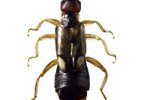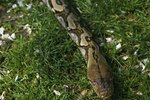Silverfish (Lespisma sacchrina) are small, silvery insects found almost everywhere around the globe. They've existed for roughly 400 million years. A variety of adaptations have helped them to survive for as long as they have.
Shedding Skin
Silverfish grow throughout their lives; they molt frequently in order to facilitate this. Not only does it allow them to continue growing, they've also been known to shed their skin at will, which is a useful defense against predators. If caught in a spider's web, these creatures can simply slip out of their skin and scuttle away, saving themselves from becoming someone else's dinner.
Diet
When presented with what others might see as a scarcity of food, silverfish see a feast. They're able to digest cellulose, so they can can make a meal out of cardboard and paper. In addition, they're happy to eat a range of other foods, including flour, oats, glue, dried meat, cereals, cotton and linen, so it's rare that they're far away from something they can eat.
Fasting
If silverfish do find themselves without food, they're master fasters. They can survive for weeks without food or water. With a source of water, they can live for around a year without eating anything at all.
Nocturnalism
Silverfish are primarily nocturnal; they're active at night and at rest in the day. If you expose one of these creatures to daylight, they'll quickly move themselves into an area of darkness. Their nocturnal adaptation helps them avoid many potential predators, including humans, who are active during the day.




